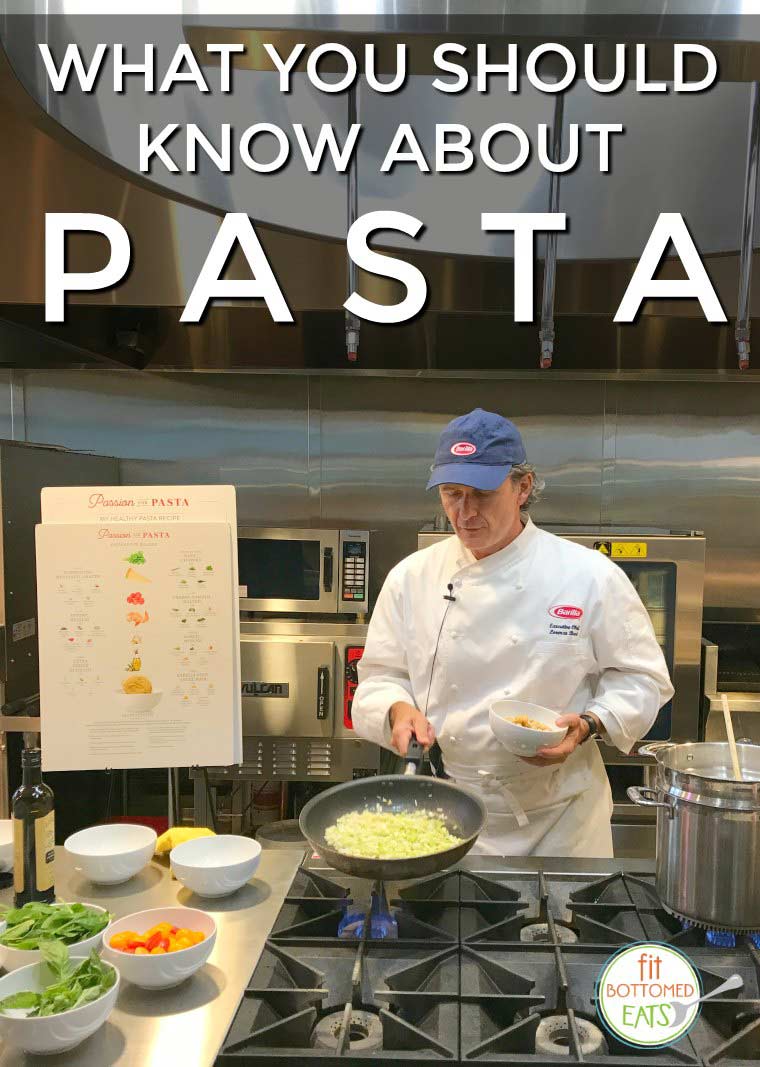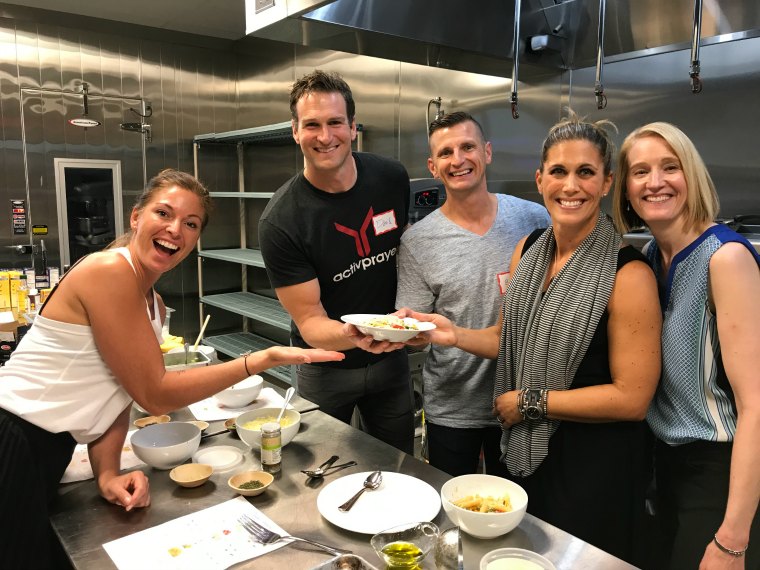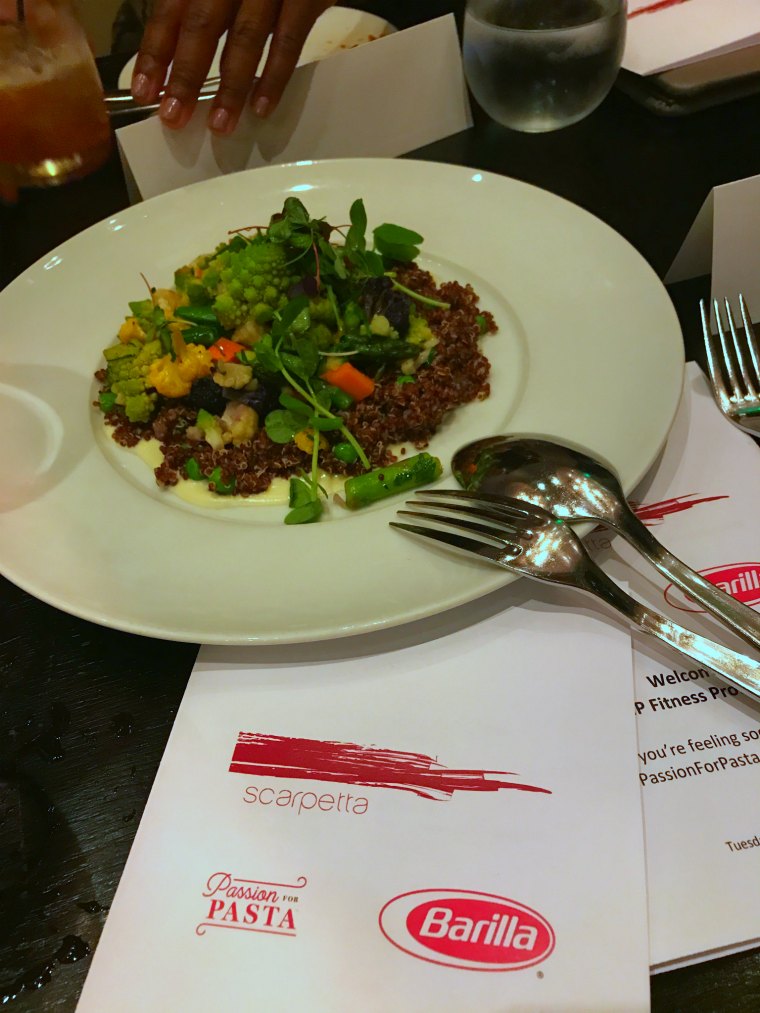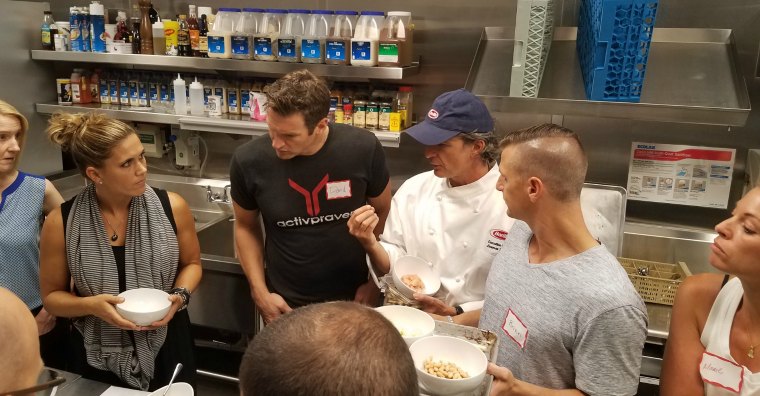Think You Know Pasta? Think Again

I’ve been cooking pasta for ages. It’s quick and simple, it’s endlessly modifiable, and, honestly, I just really love it. And while I wouldn’t have really considered myself a pasta pro, I thought I knew most of what there was to know about pasta.
Then, Las Vegas happened.
via GIPHY
Barilla invited me to take part in their VIP Fitness Professional Event in Las Vegas a couple of weeks ago. Since I was already a fan (clearly, seeing as how this is one of my favorite dishes!) — and it would offer me a chance to get to know some other fitness and food professionals, including Barilla’s Executive Chef Lorenzo Boni — I wasn’t about to say no, even though I couldn’t imagine they’d teach me too many new things about one of my favorite foods.
Boy, was I wrong.
via GIPHY
And I figure that if I learned new things — things which my team used in order to win a little culinary competition out in Vegas — then probably a few of you would learn a thing or two as well. Buon appetito!

Proof of my pastalicious victory. Go Team 3!
Most of us are probably eating pasta wrong.
Picture a serving of pasta. Is it heaped in a big bowl — maybe family style so everyone can fill their plate? Do you imagine serving heaps and heaps and chowing down on a full course of pasta, perhaps with a side of veggies or a little chicken? If so, you’re not alone — but you might want to consider changing your approach. A proper serving of pasta is more in line with what you probably think of as a side. In fact, if you go to an authentic Italian restaurant (like Scarpetta, the really lovely restaurant Barilla took us to at the Cosmopolitan), you’ll probably notice that pasta is a separate course, and it’s definitely not intended to be the big part of your meal.

First we shared this …

… and then we shared this. And THEN our main courses arrived!
You know the Mediterranean diet? Pasta is a big part of that lifestyle.
I’ll be honest. When I was asked to list the things that came to mind when I thought about the Mediterranean diet, I thought of olive oil, wine, seafood and dining al fresco — and most of the other fitness professionals there thought the same way. But, traditionally, pasta is a part of that lifestyle — and it can be an inexpensive and tasty addition!
Pasta has a pretty darn low glycemic index.
No, seriously — traditional white pasta made with just semolina wheat and water has a fairly low GI of around 30 to 60. And cooking it properly affects the GI, which brings me to …
I’ve been cooking my pasta too long.
Pasta should be cooked al dente — this isn’t just to maximize the flavor and overall experience or to sound a bit pretentious, but also because al dente pasta has a lower GI than fully cooked or overcooked pasta due to the starch being surrounded by the gluten in the pasta. And! Allowing the pasta to cool down (like for a cold pasta salad) or allowing it to cool and then warming it back up (helloooo, leftovers) actually decreases the GI even more — meaning you’ll feel fuller longer without having to eat more. Score!
But how long is too long, you ask? Great question. You should actually start testing your pasta about two minutes before the al dente time listed on the box. If you’re mixing it in with veggies, pour a little of your pasta water in with ’em and add your pasta for the remaining time. If you’re not, then take it out of the water while it’s still just slightly chewy — it should never get soft.
Speaking of pasta water — you really should save it and use it!
The starch in the pasta water helps your sauce stick to the noodles better without making your noodles actually be sticky. I tried it. It really works. Why haven’t I been doing this all along?
Different fresh herbs can be added at different times.
While adding fresh herbs as you finish cooking and plating a pasta dish is almost always a good idea, it’s not the only way to use them. Stronger herbs, like marjoram leaves, can be added much earlier in the cooking process, and this will cook off a bit of the flavor. This might take a little trial and error — or if you happen to have a world class Italian chef standing nearby like I did, you can always just ask.

Yeah, when you have the opportunity to get advice from a professional executive chef, you should probably take advantage.
Your ladle can be a huge help with plating — and portion control.
Wonder how the pros make their piles of pasta look so darn pretty (like this)? Try spinning the pasta with a fork in your ladle, then setting it on the plate.
You should always reserve a bit of olive oil for the end.
Dry is just about the worst thing a pasta dish can be, and probably the easiest way to make sure it never happens is to reserve a bit of oil to drizzle over it at the end, just before you serve it. For example, if you’re using a tablespoon of olive oil in your recipe, reserve about half of it. You can either drizzle it right over the pasta itself or around the edges of the plate or bowl for a lovely presentation (and so that whomever is eating it can mix it in as they see fit).
Okay, now I’m curious. What do you think of when I say the word, “pasta?” Was any of this new to you? —Kristen
